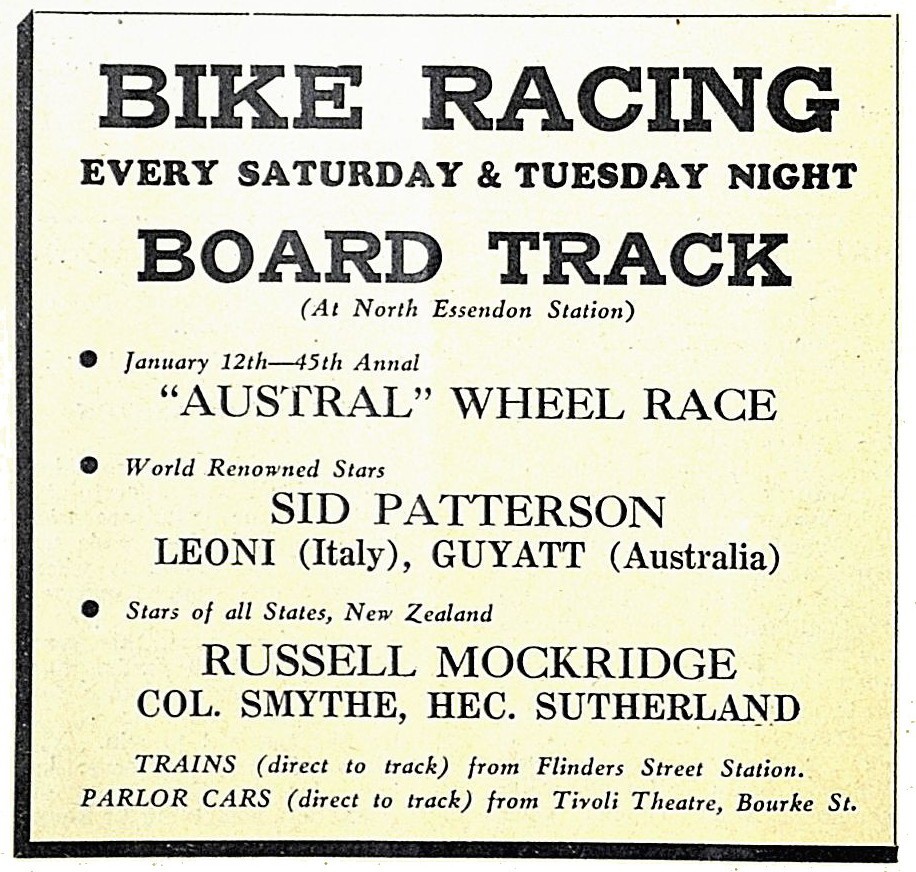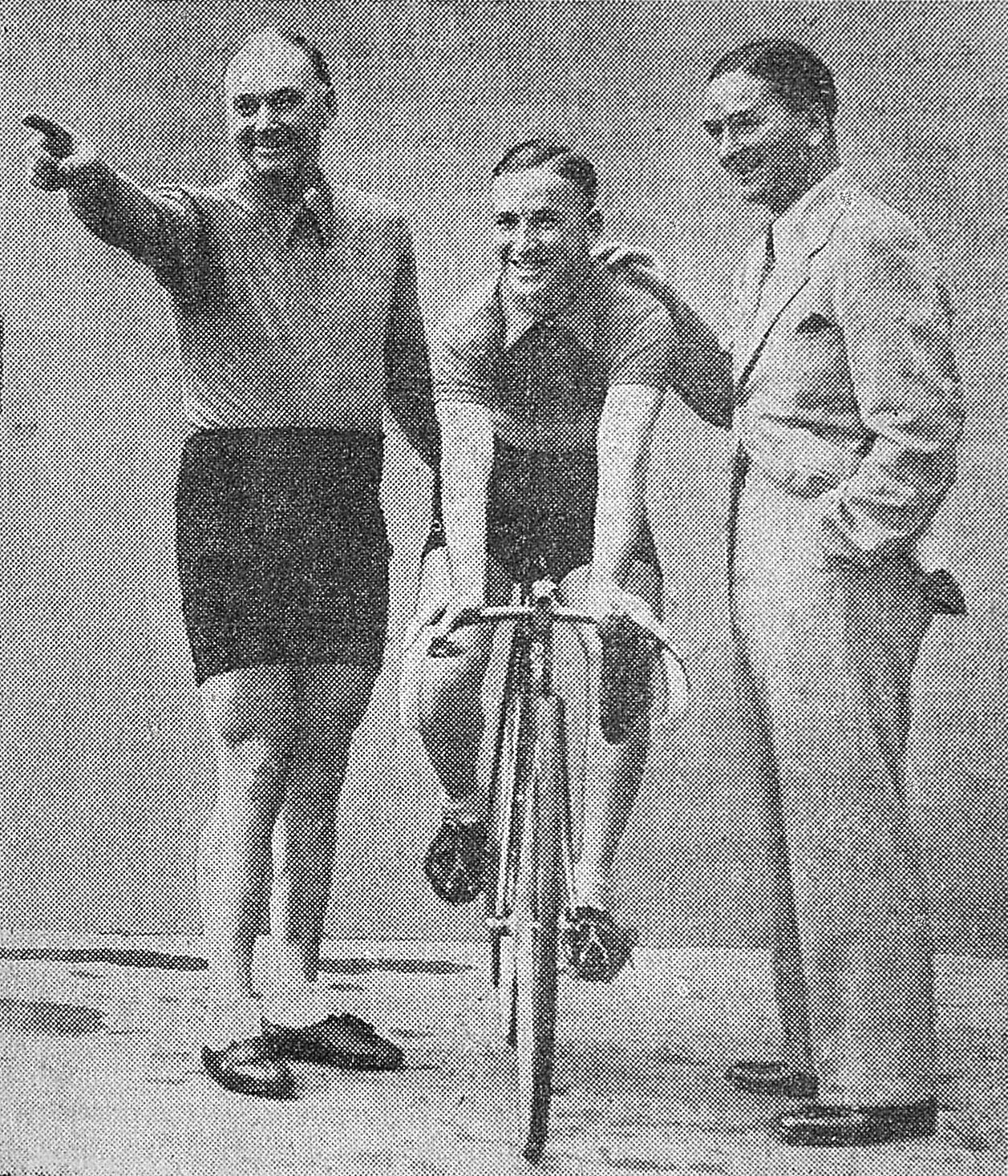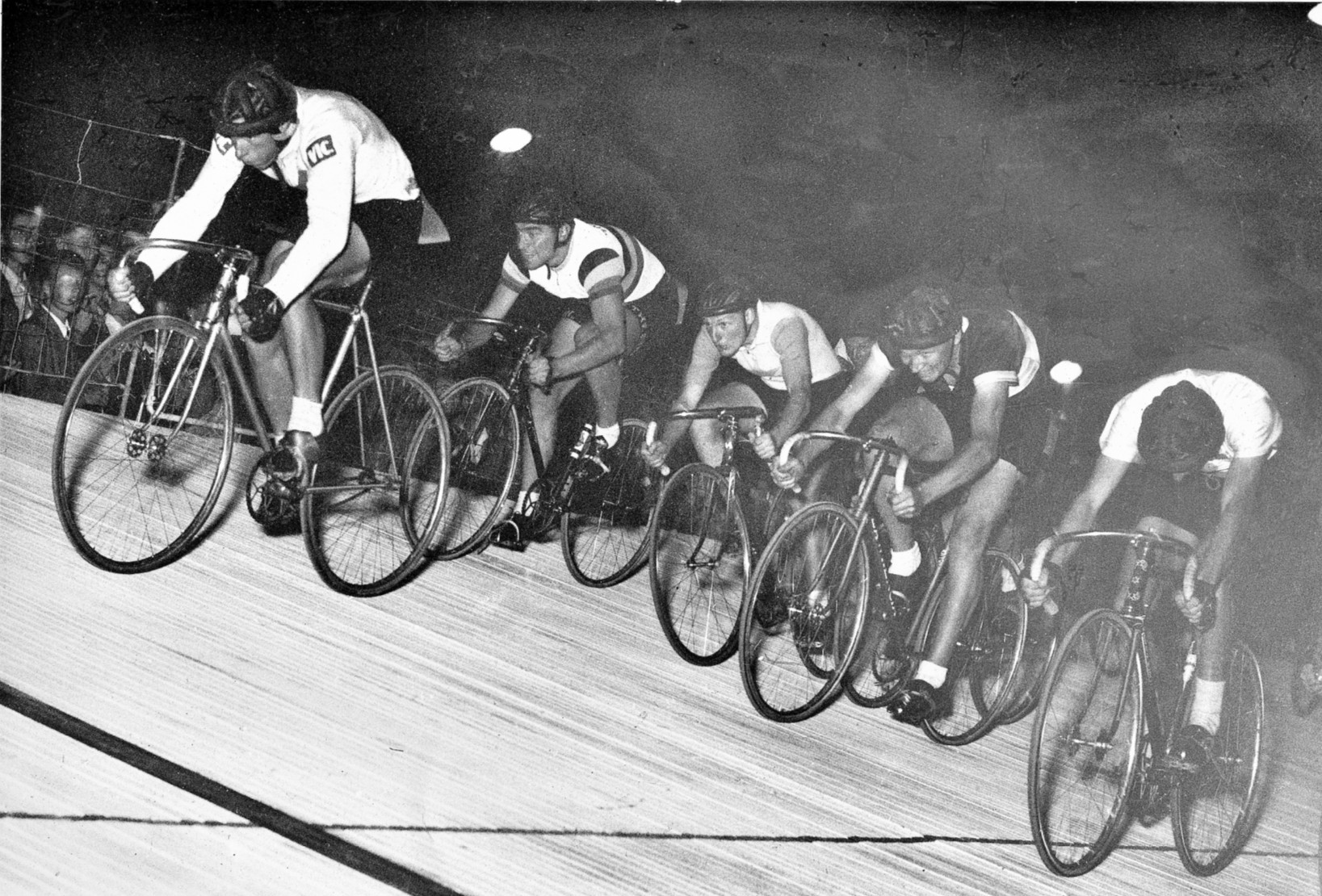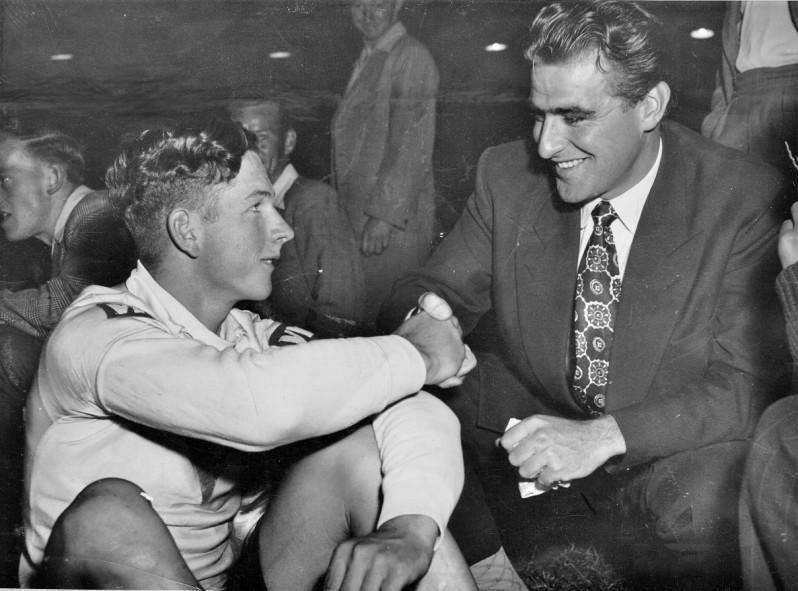Cycling promoter Jack Campbell could see that the Exhibition Oval had become inadequate for the level of racing there, particularly when internationals appeared who were readily available and a crowd booster.
His foresight was to build a European type wooden track on the same site and for the next three years, Austral Wheelraces were conducted on that new board track.
But then, some doubtful characters had other ideas for the use of that land and his lease was terminated. It was an urgent decision which saw him dismantle the track and restore it out on some vast undeveloped land at North Essendon.
It is unlikely that even this established entrepreneur envisaged the extent to which this would become such a solid foundation for Victorian track cycling and the confirmation of the Austral as an essential annual classic.

Track reassembly was completed just in time for the first Saturday night meeting on November 11, 1939. It would feature champion Deane Toseland from South Australia and the traditional season opening event, the Melbourne Cup on Wheels.
It was followed closely, only two weeks later, by what would be the 42nd staging of the Austral Wheelrace. That first Austral on the North Essendon Board Track drew 123 entries of which 15 were interstaters.
There were eleven heats with four scratchmen, Tas Johnson, Bill Moritz, Herb Guyatt and Keith Thurgood, and for the event, Olympian Chris Wheeler joined the pro ranks receiving 135 yards.
Clinton Beasley had received 90 yards but his tremendous credentials were not on the track, but on the road, including fastest in the 1935 Warrnambool. He also had received life threatening injuries in a motor accident just six months before the race but had made a good recovery due to his fitness.
He positioned himself well in the final and hit the front at 100 yards to go, holding that for the 1939 Austral victory. Second was Harry Kimpton (180 yards) and third R. Dundas (180 yards).

On his bike, Clinton Beasley was the winner of the 1939 Austral Wheelrace, with his father Jack on the left and his Uncle George right.
There were 21 consecutive stagings of the Austral during the great era of the North Essendon Board Track.
Sid Patterson started racing there in the senior Amateurs as a 15-year-old on November 21 in 1942, finishing second in his handicap heat riding from 145 yards.
During this era, Patterson won four world championships between 1949 and 1953 yet as brilliant as he was, he could not win an Austral. The extremely tight bends favoured the front runners not the scratchmen.
The most handicapped winner was Norm Stevens in 1940, who was back on 20 yards after winning the season opening Melbourne Cup on Wheels.
He might have been a little lucky though as Harry Browne (80 yards) crossed the line first but was disqualified for riding below the pole line.
The next backmarker to win was Tasman Johnson in 1944 riding from 30 yards. As an amateur he rode the 1936 Olympics then the 1938 Empire Games after which he turned pro.
Other prominent riders to put their name on the honour roll via North Essendon were Ken Stewart, the very crafty track rider who had a long winning career, and Ron Murray who was only 18 and went on to become a winner at all championships plus wheelraces, sixes, and tours.
One of the most exciting Australs held at North Essendon was in 1952 when Sid Patterson was billed to race.
Putting that into perspective, he was 1949 World Amateur Sprint Champ and 1950 World Amateur Pursuit Champ and there in 1952, about to head off and take the World Pro Pursuit.
Well before gates were due to open, the track manager looked at the swelling crowd and wisely roped off a large portion of the infield making room for another 500 spectators. It was a sell-out night.
Patterson won his heat and received a massive reception from the crowd. He was their favourite for the final but was giving away 100 yards to the next rider.
He got to the bunch at two to go but was facing the long way around the huge field. At the same time, this was an Austral handicap with its dark horse factor and that came in the form of Doug Jennings.
From the 120 yard mark, trained by Harry Browne, and only 17 years of age, Jennings flashed home in front of a wall of riders to become the youngest rider to win an Austral. Patterson finished only two lengths behind, but that was fourth place.

A most exciting finish to the 1952 Austral with Doug Jennings about to hit the line with a wall of riders behind. From the top, Sid Patterson 4th, Bob Main, Geoff McKay 3rd, Vin Nuttall 2nd.

A double thrill for 17-year-old Doug Jennings, winning the Austral and being congratulated by Sid Patterson.
In December 1952, track ownership changed hands from Campbell/Lukey to Ted Waterford without any noticeable change in organisation or racing format.
Between them and with the North Essendon Board Track, the sanctity of the Austral Wheelrace had not only been saved after the war, but had been consolidated to become the great icon that still represents the image of track cycling today.
John Robertson won the last Austral at the North Essendon Board Track in 1957 and the new Melbourne Olympic Velodrome was the next venue beckoning for weekly promotion.

The Exhibition Board Track was reassembled in the bare paddocks of North Essendon in 1939. The facilities were rather sparse but under the promotion of Jack Campbell and later Ted Waterford, racing boomed, there was a great atmosphere with some 'full house' signs and spectators turned away, especially on Austral nights or International Match Races. The Austral might have lapsed after the war but for this timely venue and promotion.
